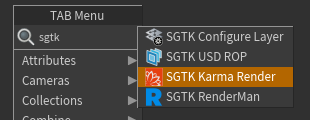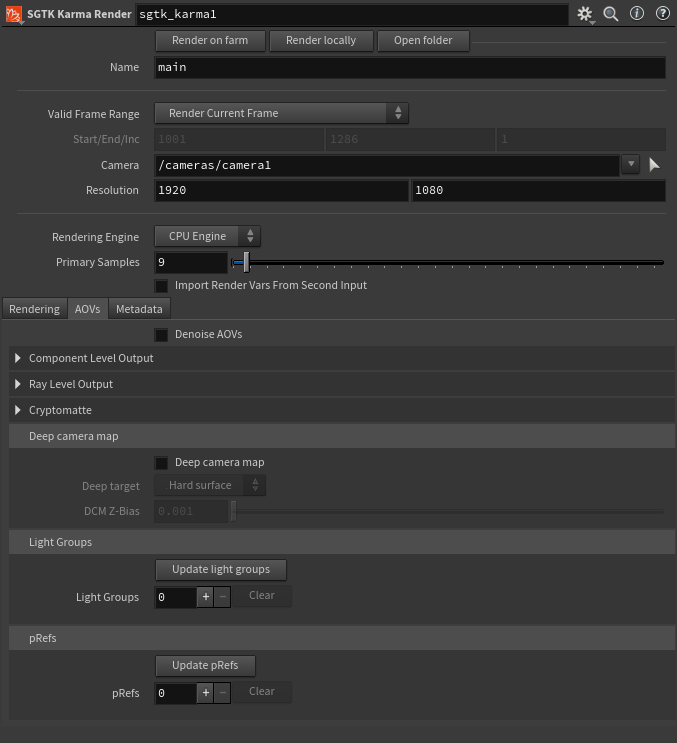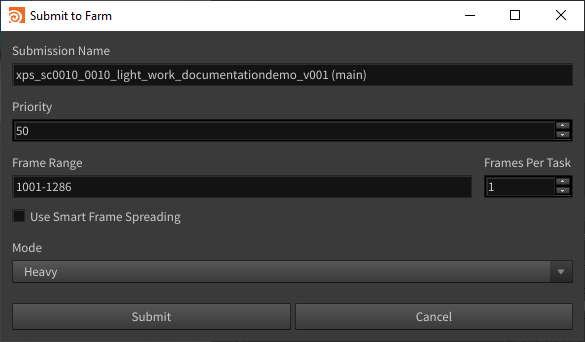Houdini - ShotGrid - Rendering with Karma
We used to have Arnold and RenderMan integrations as well, but they haven't been updated and are thus currently not usable. A student will have to put in some work to get these integrations up and running again.
We mostly render using Karma in our ShotGrid pipeline. It's fast, reliable, and SideFX actually responds to our emails if we need help! To get started, add a SGTK Karma Render node at the bottom of your node tree.
Starting your first render
If you click on the sgtk_karma node you'll see this interface:
It's similar to the Karma Render Settings node, except it's a bit easier to use and comes with some additional features. Added features include easy farm submissions tools, automatic file paths, easy light groups configuration and easy deep configuration. To get started, simply select the right camera and press "render on farm". A new pop up appears:
The default value is fine for pretty much all of these. If your render is very lightweight you might want to change the mode to medium or light. You might want to enable the Use Smart Frame Spreading option if your render is sure to take a long time, as this ensures the first, last and middle frames are rendered first so you can quickly see if there are any problems in your render.
Cryptomattes are enabled by default and will be rendered to separate EXR files, this is because Nuke seems to have some problems reading multi-layer EXRs with a Karma rendered Cryptomattes in them.
Light groups
Adding custom AOVs
Arnold integration developed by Bo Kamphues, original RenderMan integration by Gilles Vink and later rewritten by Max de Groot, Karma integration developed by Mervin van Brakel.




